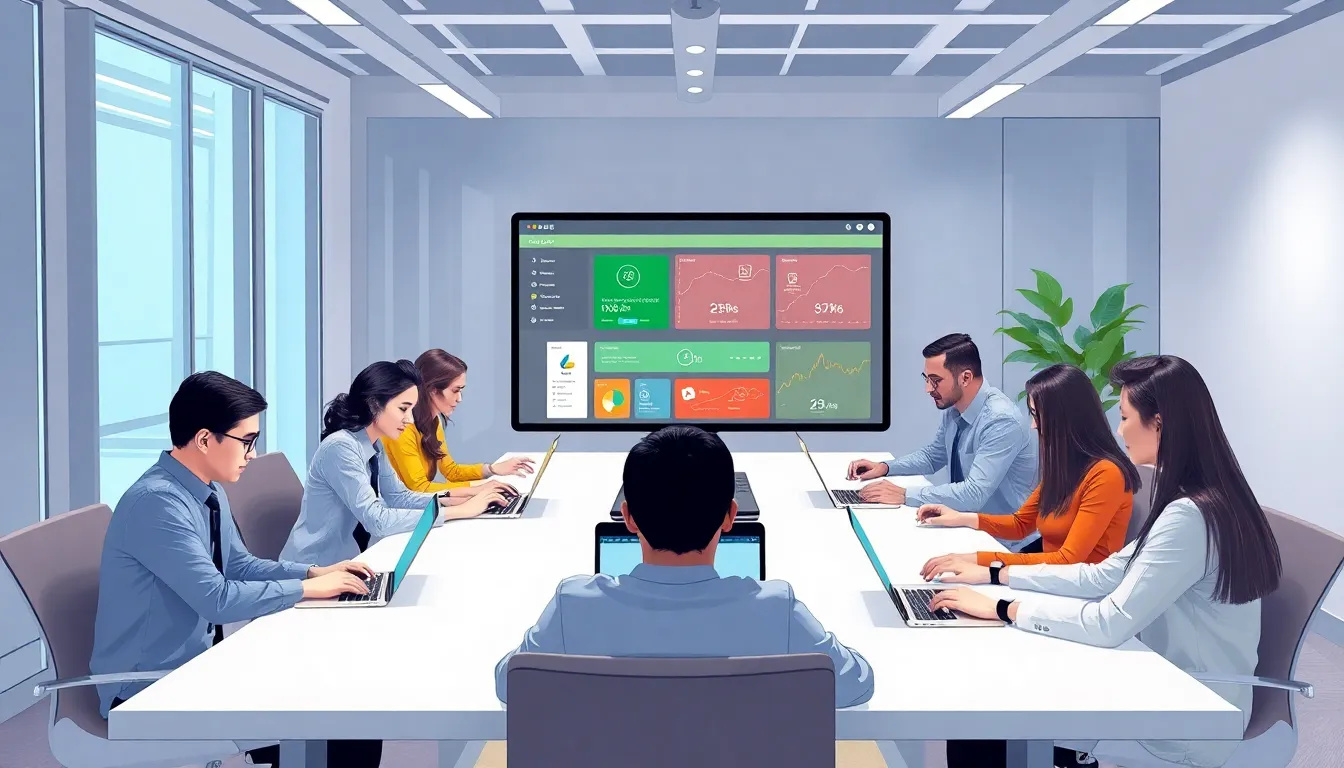Table of Contents
ToggleIn a world where software reigns supreme, the Software as a Service (SaaS) experience is like that trusty sidekick every hero needs. It’s not just about accessing applications; it’s about transforming how businesses operate. Imagine having all your essential tools at your fingertips, without the hassle of clunky installations or endless updates. Sounds dreamy, right?
But hold on—before diving headfirst into the SaaS pool, it’s crucial to understand what makes this experience truly exceptional. From seamless integrations to user-friendly interfaces, the right SaaS solution can make or break a company’s efficiency. So buckle up, because navigating the SaaS landscape can be as thrilling as a rollercoaster ride—just without the nausea! Get ready to explore the ins and outs of the SaaS experience that can elevate businesses to new heights.
Understanding SaaS Experience
The SaaS experience encompasses the overall interaction users have with Software as a Service applications. It combines functionality, accessibility, and usability, forming the backbone of effective software deployment in organizations.
Definition of SaaS Experience
SaaS experience refers to how users engage with cloud-based software solutions. This experience includes everything from user interface design to responsiveness. Characteristics of a positive SaaS experience involve intuitive navigation and fast performance. Seamless integrations with existing systems enhance this experience further. Users expect reliable support and frequent updates that ensure optimal performance. The culmination of these aspects leads to higher satisfaction and retention rates among users.
Importance of User Experience in SaaS
User experience in SaaS significantly influences customer satisfaction and loyalty. When a platform is easy to navigate, users are more likely to adopt and continue using it. A well-designed user interface reduces the learning curve and promotes productivity. Customization options enable users to tailor the software to their needs. Feedback mechanisms further strengthen user engagement, allowing organizations to improve their offerings continuously. Enhanced user experience leads to lower churn rates and improved business growth.
Key Components of SaaS Experience


A successful SaaS experience hinges on various key components that contribute to its effectiveness. Understanding these elements helps businesses maximize their cloud software’s potential.
Onboarding Process
An effective onboarding process simplifies user integration into the software. It should include comprehensive tutorials and guides that facilitate quick adoption. Organizations often benefit from personalized onboarding sessions tailored to their unique workflows. Continuous support during this phase encourages user engagement and reduces initial frustration. Regular check-ins can help address any concerns and ensure users feel supported.
User Interface (UI) and User Experience (UX)
A well-designed user interface contributes significantly to the overall SaaS experience. Intuitive navigation allows users to find essential tools and features with minimal effort. Fast response times in the application’s performance enhance user satisfaction and efficiency. Design consistency across different platforms fosters familiarity, making it easier for users to adapt. Customizable options allow individuals to tailor the interface to their preferences, promoting deeper engagement.
Enhancing SaaS Experience
Enhancing the SaaS experience requires a focus on user-centric approaches and strategic improvements. Companies that prioritize effective customer support and continuous feedback can see remarkable results.
Customer Support and Service
Customer support plays a critical role in enhancing the SaaS experience. Offering 24/7 availability ensures users receive assistance whenever they encounter issues. Knowledgeable support staff can resolve inquiries quickly, preventing frustration. Live chat options increase accessibility, modernizing support channels and making interaction seamless. Additionally, documentation and resources can empower users to troubleshoot independently, increasing satisfaction. Organizations that invest in proactive communication often build stronger relationships with their clientele, leading to enhanced loyalty.
Continuous Improvement and Feedback Loops
Continuous improvement thrives on user feedback, which informs necessary updates and enhancements. Employing surveys and in-app feedback tools allows companies to gauge user experiences accurately. Regularly analyzing this data helps identify pain points, enabling timely responses. Iterative updates often incorporate user-suggested enhancements, showcasing a commitment to meeting user needs. Involving users in the development process can also foster a sense of ownership, motivating them to stay engaged. Businesses that prioritize a culture of improvement typically witness increased user satisfaction and lower churn rates.
Measuring SaaS Experience
Measuring the SaaS experience involves assessing key metrics and tools that provide insights into user satisfaction and engagement. Through effective evaluation, companies can drive continuous improvements.
Metrics and KPIs
Key performance indicators (KPIs) enable businesses to gauge the SaaS experience effectively. Metrics such as Customer Satisfaction Score (CSAT), Net Promoter Score (NPS), and churn rate reveal user sentiment and loyalty. Tracking user activation rates reflects how easily new customers engage with the platform. Additionally, monitoring session duration helps determine how effectively users interact with the software. Analyzing these metrics guides businesses in refining their offerings and optimizing user experiences.
Tools and Techniques for Assessment
Several tools and techniques facilitate the assessment of the SaaS experience. Surveys and feedback forms collect valuable user insights, providing direct input on their experiences. Analytics platforms like Google Analytics and Mixpanel track user behavior, offering data on engagement patterns and feature usage. Heat maps illustrate user interaction with the interface, highlighting areas for improvement. Regularly utilizing these tools ensures businesses stay attuned to user needs and can implement effective enhancements based on real-time feedback.
The SaaS experience is pivotal for businesses aiming to thrive in today’s digital landscape. By prioritizing user-centric design and responsive support, companies can significantly enhance user satisfaction and loyalty. Continuous improvement based on user feedback ensures that the software evolves alongside user needs.
Measuring key performance indicators provides valuable insights into user engagement and satisfaction. As organizations embrace the SaaS model, understanding and optimizing the SaaS experience will be crucial in driving productivity and sustaining growth. Embracing these principles positions businesses to fully leverage the benefits of cloud-based solutions and remain competitive in an ever-changing market.





